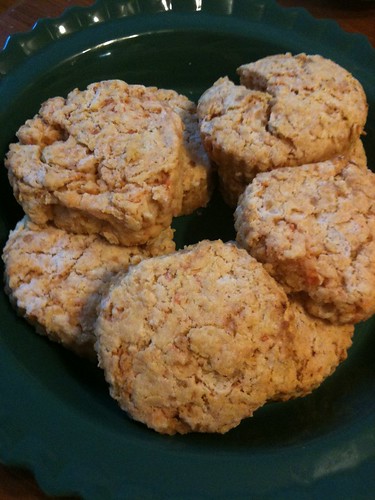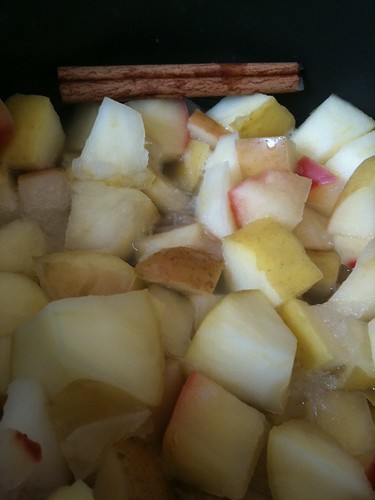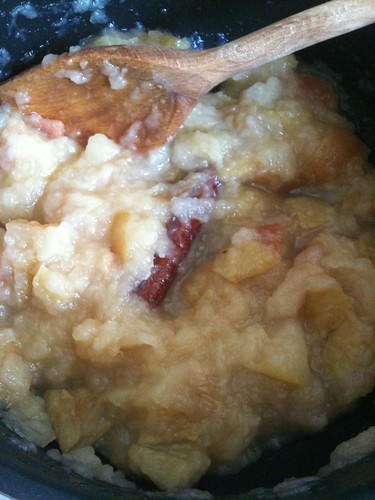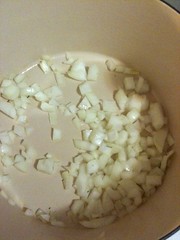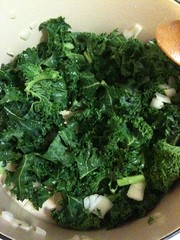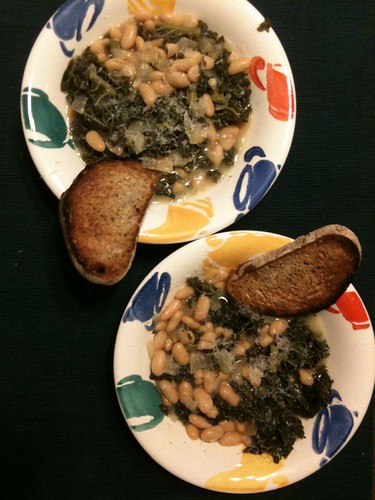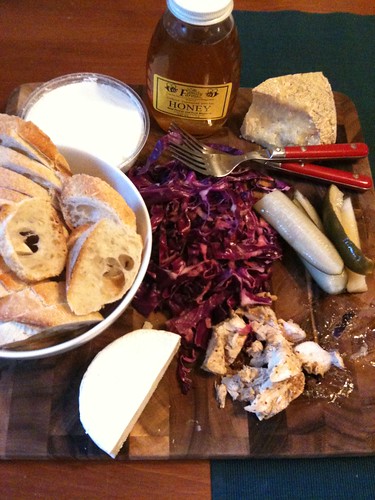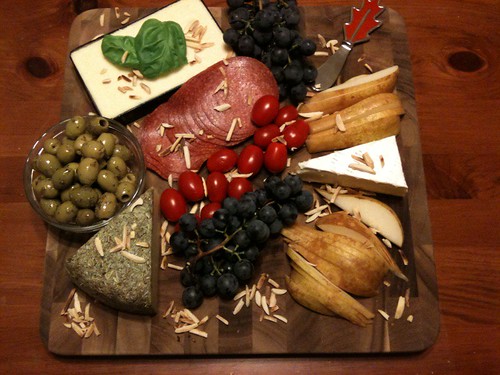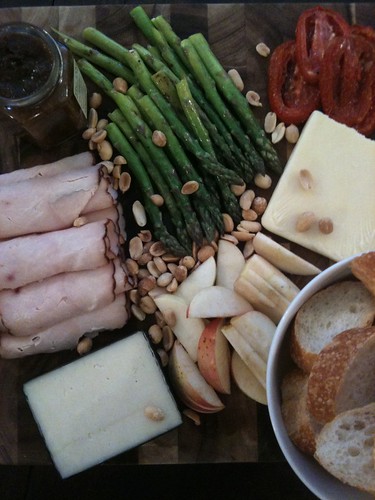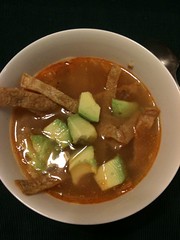
I didn’t know this at the time, but the best part about roasting a chicken is the soup you make with the leftover carcass. After I failed to roast my chicken, I embarked on a new journey with the remains: Chicken broth. I plopped that medium-rare salmonella fest in my Dutch oven, filled it with water to cover, turned on the heat, and walked away. I thought about adding some herbs and aromatics—I keep onions, bay leaves, and rosemary on hand—but I didn’t want a stock, I wanted a broth.
I let the chicken simmer for about two and half hours, then I strained it with a fine sieve and transferred the liquid to Tupperware containers, storing half in the fridge and half in the freezer. Next, I picked through the bones and muck, separating out all the nice (fully cooked) chickeny bits. Fantastic: I had a homemade Make Your Own Chicken Soup kit.
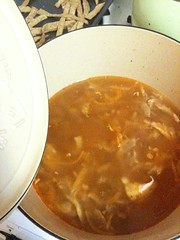
And not a moment too soon. Alex has come down with what my sister refers to as a “man cold.” It’s been three weeks and he’s still coughing, and whining about it. In an effort to appease his inner little baby girl with some wholesome, genetically relevant food, I gave my chicken soup kit a Mexican twist.
When I cook (not bake), I don’t like to follow recipes. Rather, I prefer to go to experts I trust for a method (in this case, shock, I looked to Martha Stewart and Rick Bayless). Once I know how they would do it, I pare down their recipes to something that I consider more reasonable—I mean, yeah I think Rick es muy fabuloso, but I don’t keep any epazote in the house).
So I arrived at this simplified, yet delicious, chicken soup for el alma.
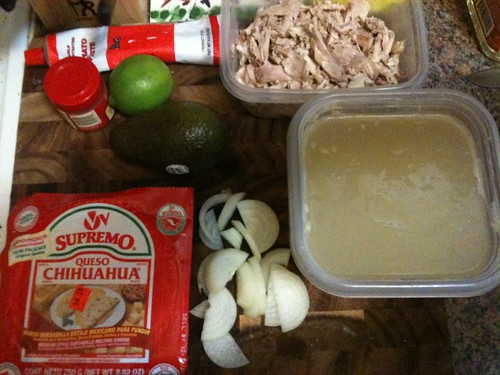
Tortilla soup, serves two
2 tablespoons vegetable oil, divided
1 small onion
1 cup shredded chicken
1 tablespoon tomato paste
1 teaspoon chili powder (I am a wimp—if you like more heat, up this)
3 and half cups of chicken broth (rescued from the chicken you undercooked)
Salt and pepper
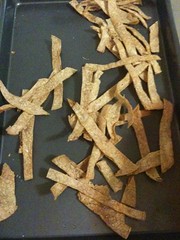
Mandatory garnishes
½ cup shredded Chihuahua cheese
1 diced avocado
1 sliced lime
Tortilla strips (Take four corn tortillas, brush them with vegetable oil, cut them into strips, salt them, and bake in 400-degree oven for about fifteen minutes.)
Heat up your soup pot with some oil. Add the chopped onion. Season with a nice pinch coarse salt and a few cranks of freshly ground black pepper. When the onion is translucent, add the chili powder and tomato paste. Stir to incorporate and cook for about two minutes longer before adding the chicken broth and shredded chicken. Bring to a boil, then take the heat back and allow to simmer for however long you can. We waited about ten minutes because we were hungry.

Divide cheese between serving bowls, placing a sizeable mound at the very bottom of each. Laddle soup into bowls and garnish with tortilla strips and avocado chunks. Serve with lime wedge and Tabasco sauce.
Added bonus: we used the leftover leftover chicken, tortillas, and cheese for quesadillas. Bam! said the lady.

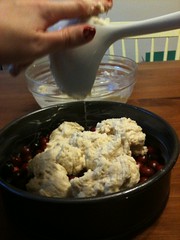
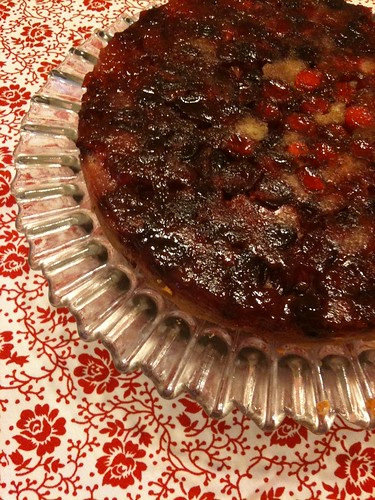





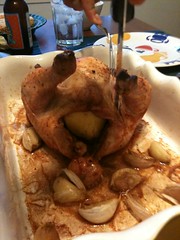
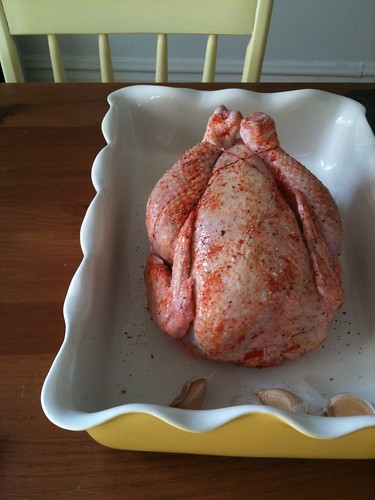 At 1 pm I put my beautiful Gunthrop Farms chicken—which had been stuffed with lemon, surrounded by garlic cloves, and sprinkled with paprika, as per Laurie’s bequest—into a 300-degree oven, where it would cook for two hours. According to Laurie, “The chicken is done when the leg bone wiggles and the skin is the color of teak.” Super.
At 1 pm I put my beautiful Gunthrop Farms chicken—which had been stuffed with lemon, surrounded by garlic cloves, and sprinkled with paprika, as per Laurie’s bequest—into a 300-degree oven, where it would cook for two hours. According to Laurie, “The chicken is done when the leg bone wiggles and the skin is the color of teak.” Super.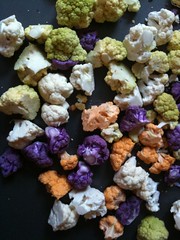 Because I was roasting a chicken, I decided to do it up. I found four colors of cauliflower at the farmers’ market, along with apples, brussels sprouts, chestnuts, and sweet potatoes. A menu was formed:
Because I was roasting a chicken, I decided to do it up. I found four colors of cauliflower at the farmers’ market, along with apples, brussels sprouts, chestnuts, and sweet potatoes. A menu was formed: 